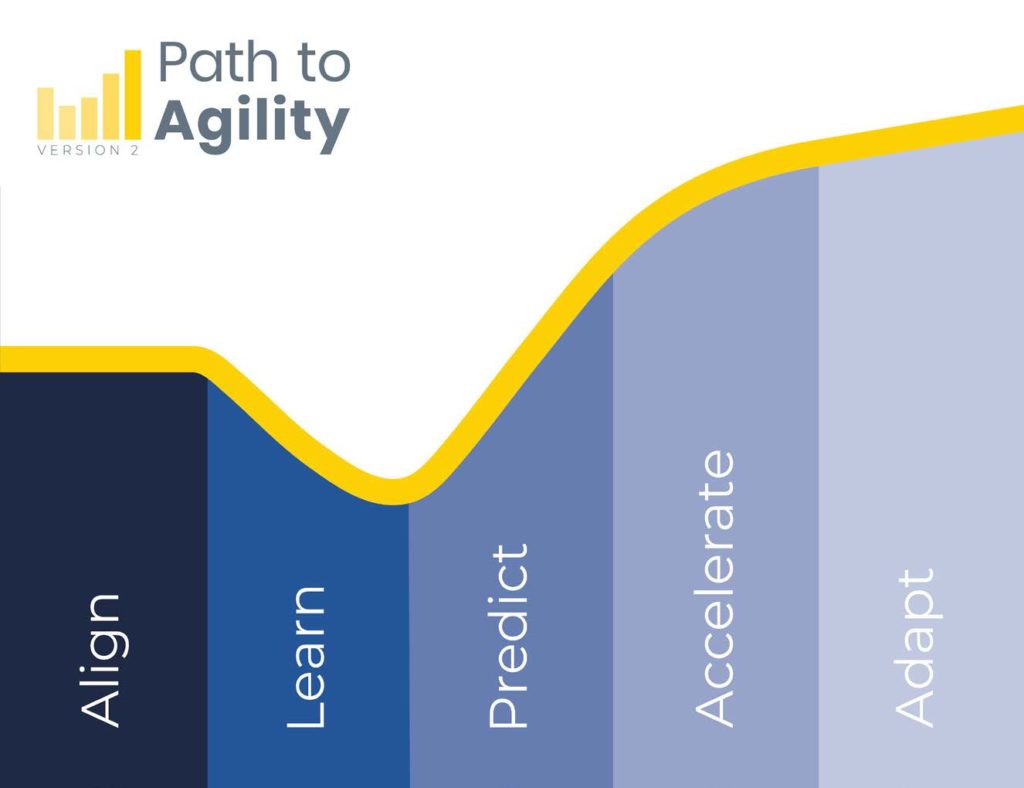You would think that within that behemoth of a project plan required of waterfall processes there would be a page or two outlining fixes and time needed to tidy up. But for the most part…there isn’t. Bugs, misses, lost features are part of what I like to call, the “hidden project plan,” time spent after the end of the plan devoted to cleaning up work kept from stakeholders. Unfortunately, this is the work that draws the team away from their current project and back to the project they thought they’d finished.
I’m no saint. During my 35 years in tech, I have participated in my share of hidden project plans. However, it didn’t leave me feeling very good about my work. This experience is what drew me to Agile and why I stayed. With Agile, there is no hidden agenda as visibility and transparency are core to the practice.
Agile Transformation Consists of Phases
Throughout our experience training, coaching, and guiding organizations through their Agile adoption, we have determined that an Agile transformation consists of five stages.
Agile Velocity’s Path to Agility®

- Align
- Learn
- Predict
- Accelerate
- Adapt
Transparency is key to all stages of the journey.
Seeing is Believing: Visibility in Action
For people outside the Scrum Team, it can be difficult to decipher the finished product from code. Agile can help solve issues arising from this inherent challenge. When you walk into an Agile organization, there are physical signs that work is being done. Ideas are transformed into user stories which are written down and added to the backlog or on the Sprint board. Post-its and note cards are taped in organized columns marking progress. Release plans and burnup charts are displayed for all to see.
In addition to visual cues, there are also auditory signs of work. In fact, increased vocal communication is hallmark to an Agile transformation. Talking to your neighbor is faster than email; face-to-face provides more clarity than emojis. Video and task management technology allow distributed teams to also communicate in an efficient manner.
Daily stand-ups allow for teams to discuss what they are working on and remove roadblocks at the task level while sprint retrospectives make room in everyone’s schedule to applaud successes and fix broken processes at a higher level. And we shouldn’t forget sprint reviews as they showcase work to stakeholders and allow for on-the-spot feedback.
Making Progress
Without conquering visibility, an organization cannot get to the next phase of the Agile transformation, Predictable. It’s very difficult to know how much work will be accomplished without analyzing data, you can’t analyze if there was no data gathered, and you can’t gather what is not communicated.
Eliminating the hidden project plan takes guts because it can leave one vulnerable. However, having processes and meetings in place to master the visibility phase can make life easier for the communicator and recipients.
What has been your experience with the hidden project plan? How do you communicate and manage tech debt and bug fixes? Tell us about it by commenting below.
For more on our approach to building lasting business agility, you can check out our Transformation Services page.




